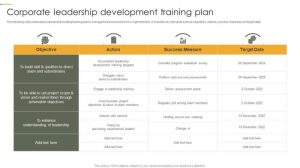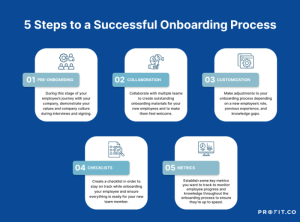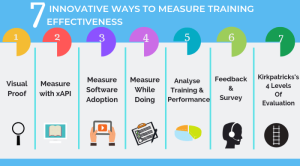In today’s competitive business landscape, possessing strong soft skills is no longer a mere advantage—it’s a necessity. This comprehensive guide explores the critical role of soft skills corporate training in driving employee performance, boosting productivity, and fostering overall organizational growth. We will delve into defining essential soft skills, examining the return on investment in training programs, and outlining effective strategies for implementation and measurement of success.
From identifying training needs through needs assessments to designing engaging curricula and fostering a culture of continuous learning, we’ll provide practical insights and actionable steps to help organizations cultivate a workforce equipped with the interpersonal and collaborative skills necessary to thrive. We’ll also address common challenges and offer solutions for maximizing the impact of your soft skills training initiatives.
Defining Soft Skills in a Corporate Context
Soft skills, often overlooked in favor of technical expertise, are the interpersonal and intrapersonal abilities crucial for navigating the complexities of the modern workplace. These skills are the invisible drivers of effective teamwork, strong leadership, and overall organizational success. Understanding and developing these skills is paramount for individual career advancement and organizational growth.
Essential soft skills in a corporate setting encompass a range of competencies, including communication (both written and verbal), teamwork, problem-solving, critical thinking, adaptability, leadership, time management, and emotional intelligence. These are not merely desirable traits; they are fundamental building blocks for achieving business objectives and fostering a positive work environment.
Core Components of Essential Soft Skills
Effective communication, for instance, ensures clear and concise message delivery, minimizing misunderstandings and fostering collaboration. Strong teamwork facilitates efficient project execution and boosts overall productivity. Problem-solving and critical thinking equip individuals to analyze situations, identify solutions, and make informed decisions. Adaptability allows employees to navigate change effectively and contribute positively to dynamic environments. Leadership skills enable individuals to motivate and guide teams, fostering a sense of shared purpose and driving performance.
Time management ensures efficient prioritization of tasks and meeting deadlines, maximizing individual and team output. Finally, emotional intelligence, the ability to understand and manage one’s own emotions and empathize with others, builds stronger relationships and improves collaboration.
Translating Soft Skills into Tangible Business Outcomes
These soft skills translate directly into measurable business benefits. For example, improved communication leads to fewer errors, increased client satisfaction, and enhanced team cohesion. Effective teamwork streamlines workflows, accelerates project completion, and reduces conflict. Strong problem-solving skills minimize operational disruptions and enhance innovation. Adaptability enables organizations to respond swiftly to market changes and maintain a competitive edge.
Leadership skills foster employee engagement, boost morale, and drive innovation. Efficient time management improves productivity and reduces operational costs. High emotional intelligence fosters a positive work environment, increases employee retention, and strengthens client relationships.
Case Study: The Impact of Strong Soft Skills on Employee Performance
Consider a software development team facing consistent project delays. While possessing strong technical skills (hard skills), the team lacked effective communication and collaboration (soft skills). Following a soft skills training program focusing on active listening, conflict resolution, and collaborative problem-solving, the team experienced a significant shift. Project completion times decreased by 25%, employee satisfaction increased by 30%, and client feedback improved dramatically, leading to increased client retention and new business opportunities.
This demonstrates the significant return on investment (ROI) from cultivating strong soft skills within a team.
Hard Skills vs. Soft Skills: A Comparative Analysis
| Skill Type | Definition | Examples | Contribution to Corporate Success |
|---|---|---|---|
| Hard Skills | Technical abilities and knowledge specific to a job or industry. | Coding, data analysis, accounting, marketing | Directly contribute to task completion and output; essential for technical roles. |
| Soft Skills | Interpersonal and intrapersonal abilities essential for effective collaboration and workplace success. | Communication, teamwork, problem-solving, leadership | Enhance teamwork, improve communication, boost morale, foster innovation, and contribute to a positive work environment; crucial for all roles. |
Ultimately, successful soft skills corporate training isn’t just about delivering a program; it’s about cultivating a culture of continuous improvement and empowering employees to reach their full potential. By understanding the value of soft skills, identifying training needs, implementing effective programs, and measuring the impact, organizations can unlock significant benefits, leading to increased employee engagement, improved performance, and sustained corporate growth.
Investing in your employees’ soft skills is investing in the future success of your organization.
Commonly Asked Questions
What is the difference between soft skills and hard skills?
Hard skills are technical abilities, like coding or accounting. Soft skills are interpersonal attributes, like communication and teamwork.
How long does soft skills training typically last?
Duration varies depending on the program’s scope and depth, ranging from a few hours to several weeks.
How can I measure the effectiveness of soft skills training?
Use pre- and post-training assessments, employee feedback surveys, and performance reviews to gauge improvement.
What if my employees resist soft skills training?
Highlight the benefits, tailor training to their needs, and emphasize practical application in their daily work.




